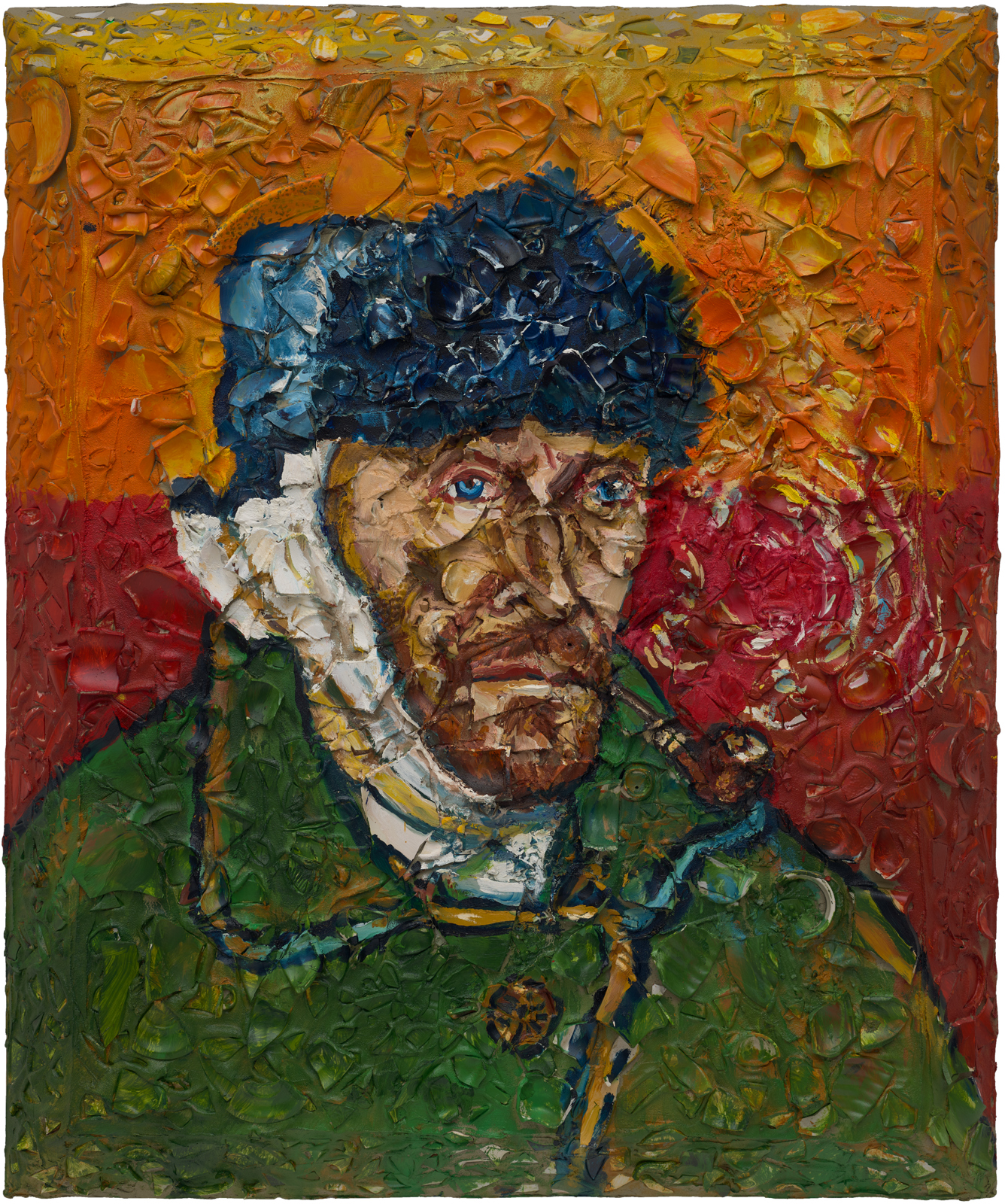
As the revival of in-person gallery openings forges increasingly on across global art hubs, artist Julian Schnabel was the most casually dressed attendee of his own last week at the Brant Foundation Art Study Center in New York’s East Village. As if encompassing the neighborhood’s historically Bohemian lifestyle in his appearance and demeanor, Schnabel wore an old flannel, mismatched shorts and tired Vans. Stuffy art-snobbery, be gone. His je ne sais quoi carried into his delivery as he escorted a small crowd through his paintings, delving into his creative process and uncovering his favorites among the 25 pieces of art that make up his new exhibition, “Self-Portraits of Others,” on view through December 30.
Schnabel told the group that the series began while he was filming At Eternity’s Gate, a 2018 movie starring Willem Dafoe as Vincent van Gogh and Oscar Isaac as Paul Gauguin. While shooting on location in Paris, he often visited the Musee d’Orsay to study van Gogh’s self-portraits, he says. Soon, he started experimenting with ways to recreate and reimagine these works of art in a new way; this body of work was born and includes his own renditions of self-portraits by van Gogh, Frida Khalo, Caravaggio as Goliath in his circa 1599 David and Goliath and Jesus himself as rendered in Diego Velasquez’s 1632 Christ Crucified. Schnabel first glued broken plates to each wood canvas before he started painting in oil, which creates an intense depth and curiosity to each piece of art.

In this complex and innovative series, Schnabel explores the art of portraiture by painting both the living and the dead, sometimes posing contemporary figures to render the likenesses of the dead artists and their historical subjects. Dafoe sits for van Gogh’s Impressionist selfie and Isaac does the same as Caravaggio. One floor of the Brant Foundation show displays three portraits of Dafoe as van Gogh on one side with three portraits of van Gogh as van Gogh on the other. Interestingly, upon taking an impromptu poll of the room, Schnabel learned that more visitors to the opening day’s preview gravitated towards the paintings of Dafoe. He insists that painting a person in the flesh, as opposed to copying a flat painting, creates more dimension and light, therefore bringing the subject to life.
Wanting to include portraits of a woman, Schnabel landed on Frida Kahlo quite easily, having become infatuated with one of her paintings at the age of 16 while touring the Museo del Palacio de Bellas Artes in Mexico City. The life-size double portrait stuck with him over the years, and he divided the subjects of this diptych onto two separate canvases for his own interpretation: The Two Fridas, Number 1 and Number 2. As he guided the group through a gallery of his portraits of self-portraits by Caravaggio and Velasquez, the artist turned the lights off. In doing so, morning sunlight from the tall windows shone in a similar effect on Schnabel’s works as Caravaggio captures in paint: exquisite details hidden or highlighted in the contrasting darkness and illumination of his chiaroscuro. Schnabel reveals that he had one of his sons, Cy, pose for the portraits of Velasquez and Christ to capture how light falls on a three-dimensional face.
Craving more culture? Sign up to receive the Cultured newsletter, a biweekly guide to what’s new and what’s next in art, architecture, design and more.










 in your life?
in your life?

